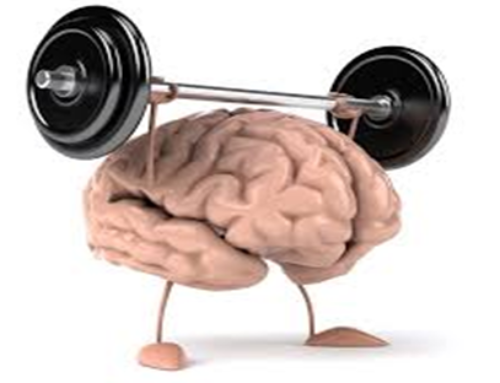Within our bodies there is a constant state of cells building up and breaking down. Literally billions of cells die every day and billions of new ones are created to replace them.
This metabolic activity, this constant building up and breaking down at every second in time, is the summation effect of all ‘building up’ processes, referred to as anabolism or anabolic, and all ‘breaking down’ processes, referred to catabolism or catabolic.
Bone cells, for instance, have a constant turnover process where Osteoclasts (mineral removers), a type of cell whose job it is to continually break down and resorb bone minerals, are in constant opposition with Osteoblasts (bone builders), a type of cell whose job it is to continually deposit bone minerals and form new bone. This constant process of anabolism and catabolism may at certain times produce a NET effect of bone GROWTH, where the total amount of bone minerals formed outweighs the total amount of minerals broken down or resorbed – net effect is extra bones mass for that specific period of time. That may have happened over the course of one minute or one week but the net effect is growth. What if the overall amount of bone minerals resorbed outweighed the total amount deposited – we would have a NET effect in that specific period of time of bones DECLINE.
Again, these processes happen continually, sometimes producing a NET growth and sometimes producing a NET decrease. This is totally normal, and over time there would generally be a relatively homeostatic result (where old cells die, new cells replace but overall the same amount of tissue/weight/cells exists). But what if over the course of several years the catabolic activity outweighs the anabolic activity on a majority basis – the result would be a gradual decline in cells, in this case bone minerals. And what’s that called? – Osteoporosis!
Well what about in the case of muscle tissue (proteins) and Lipid tissue (fat cells)? Are we burning or building up fat stores? And are we burning or building up muscle?
The question we need to ask at this level of specificity is – ‘What is the NET effect (catabolic or anabolic) at this SPECIFIC point in time?’ You see, if we were to take a period of time, say a few months, we know that while it is possible to build muscle (anabolism) and burn fat (catabolism) during that same period, it is most likely that these effects were NOT done at the same specific points in time, that it actually happens at many brief periods of net growth in muscle (while fat is stagnant or even increasing slightly) followed by brief periods of fat catabolism (while muscle is stagnant or even slightly decreasing) and where the net fat built during the anabolism phase is outweighed by the net fat burned during the catabolic phase, and vice versa for muscle. This is if we do it right, of course.
What we want is a net effect over time of catabolism, or decline, for fat while producing a net anabolic effect for muscle (or at least a NET maintenance for muscle while burning fat). Oh, and for those that just want to lose lose lose, less is more, I don’t care about muscle I just want to be thinner and weigh less because I like the emaciated look, there is a great website for you called www.yoorafarknidiut.com.
How is this done? Well, as we have mentioned, at any specific point in time it is very unlikely that you will be burning and building (net catabolic and net anabolic) at the same time. As you will see below, the hormones and chemical environment required to produce muscle anabolism are the same hormones and the very environment that kills fat burning and even promotes fat storage. Think about it, what’s needed on a general level – sufficient calories, carbohydrates for growth/energy and protein for building blocks, insulin presence and a stimulus to tell the body more protein stores are required. What do these things tell the body about lipids at this point in time? For those that don’t know, you’ll find out below. So, when you hear people say “lets burn fat and build muscle together” you can say that’s mostly bullshit hype and what is it really – are you burning or building?
Let us now look at the science to see why, and then see how we can strategically use brief periods of burn and brief periods of build to create a net effect over time of more muscle and less fat.
Insulin, the storage hormone.
We all know about insulin. In this day of rampant diabetes we know that without insulin our blood sugar levels get too high and our brain goes wonky, to put it bluntly. Our blood sugar, or glucose levels, need to stay within a certain zone for the body and brain to function properly, and insulin’s role is to lower blood sugar levels when it starts getting too high while a number of other hormones (Glucagon, Cortisol, Adrenalin, etc) are given the duty of increasing it when too low.
The stimulus for insulin secretion is simply rising blood glucose levels, and the way insulin achieves this task of decreasing it is by implementing the following orders to the body and cells:
1. Stop burning fat as a fuel source because there is already too much of this glucose stuff here in the blood and we need to use up as much of it as we can, so use this stuff instead.
2. Remove glucose from the blood and stow it in the storage tanks, these predominantly being the liver and muscle tissues. In order to achieve this command insulin tells these body cells to open their doorways (facilitated diffusion channels) to the glucose in the blood.
3. If any excess glucose continues to enter the bloodstream (over and above what the liver and muscles can store, which is actually quite rare, but nevertheless) this promotes lipid synthesis in adipose tissue. In other words, store fat!
Along with increasing the entry of glucose into muscle cells (stored in the form of glycogen) the uptake of proteins and fats into the cells is also increased. This means if insulin is high any of the macronutrients in the blood will get stored. You hear people say that carbs get tuned to fat if in excess, well that’s SORT of true – it’s not so much those specific glucose molecules getting turned into fat (they actually get stored as glycogen usually) it’s the fat in the blood (and eaten with the carbs) that goes straight to fat cells while the insulin is high.
So, by these effects insulin has produced an overall ‘storage’ or anabolic effect.
Pro’s and Cons:
• Good for anabolism and building muscle
• Good for storing glycogen and increasing energy stores
• Good for thyroid/metabolism as the glycogen/energy storage tells the body that we are in a healthy energy balance and there is no need for the starvation response (that usually accompanies low caloric diets, which we’ve all heard before).
• Bad for burning fat and for increasing its storage.
If Insulin is the storage hormone, and can be used to great effect for our anabolic goals (muscle and energy stores), what about the catabolic phases we need to burn fat?
These previous events all happen if insulin is high due to the stimulus of rising blood sugar. What about the opposite though – falling blood sugar levels and the corresponding decrease in insulin? If insulin is low what is the effect? Well, other than the body telling insulin to get the hell out of here, pretty much the opposite when Glucagon tells the body to:
1. Stop using blood glucose for energy as we don’t have enough as it is – use the fat in the blood instead.
2. Along with that, break down the lipids stored in fat cells to release into the blood so we can keep burning fat in our attempts to spare the minimal glucose that we currently have.
3. Release glucose from the available storage tank (liver glycogen) and squirt it into the blood to achieve sufficient levels.
4. Close the glucose channels of cells so glucose can’t get in and stays in the blood.
Along with decreasing glucose from getting into the cells by closing the doorways the uptake of protein and fats is also decreased from getting into the cells.
Pro’s and Con’s of low glucose/insulin:
• Good for fat burning/catabolism
• Bad for muscle protein uptake and synthesis
• Bad for muscle glycogen, it lowers glycogen/energy levels in the muscles and liver. The chronic effect of which is low energy/performance in training and low energy balance – telling the thyroid/metabolism that a gradual decrease in metabolism may be required to sustain this level of negative energy balance.
Controlling insulin by intent
We know insulin is secreted by rising blood sugar levels and blood sugar levels we can effect by our dietary consumption of carbohydrate (and even to a smaller degree through protein) foods. Consuming high carb foods increases blood sugar, abstaining from carb foods will result in a gradual decrease in blood sugar as the glucose gets used up without replacement.
Producing catabolism and anabolism by intent:
Now we use this knowledge to apply the practical extrapolations that come from it:
When we want an overall catabolic effect which we need for fat burning we decrease the insulin and blood glucose (lower carb, lower calorie consumption). When we want an overall anabolic effect which we need for muscle building and preservation of metabolism (without which the fat burning of catabolic phases would slowly diminish over time) we increase insulin and blood glucose along with proteins for the building blocks of muscle. But for how long and by how much?
Here is the most important question. For there is not just one way to skin a cat. These aims can be accomplished in many different ways if structured properly. Some people successfully use three to four days in a row of catabolic burning. In these days they would typically consume high protein/fat diets which have low carbohydrate content, thereby producing only small insulin response and mostly using fat for fuel, all the while barely maintaining muscle protein. Then, following this period of burning with 3-4 days of building, where higher carbohydrate levels and very low levels of fat intake (because of the fat storage that would occur if fats are in the blood at the same time as the high insulin levels) produce the anabolic period of building as much muscle as possible while trying to keep fat storage as low as possible, even though it’s almost impossible to completely eradicate it. Others prefer to shorten the phases to a single day of burning followed by a single day of building. Others go for four to five days of burning followed by just two days of building (like the weekday low carb/weekend high carb diets). Still, others choose three days burning to one day build. We can even do the whole cycle of burning turned to building effectively in one single day if at least a significant portion of the days is dedicated to burning (low blood sugar without interruption) followed by a short period of high insulin after training to satisfy the building requirement.
Which regime is right for you? Obviously your goal has a lot to do with it – are you more focussed on burning or more focussed on building, or an even combination?
The many different regimes may sound confusing and counterproductive, however, modern research points to several things that make the choosing less of a drama. Firstly, the cycling between burning and building, or carb cycling is no new idea and more and more evidence is proving this to be the best way of achieving fat loss without muscle detriment. Secondly, all of these protocols follow a build/burn cycle that only varies slightly in duration. I.e., very few, if any of them, go more than a week of burning before realising that metabolism will be compromised and so a build is thrown in. And the build period rarely goes longer than three to four days before the anabolic effect begins to outweigh in fats favour.
What it all comes down to in the end is how long can your metabolism go with low energy balance before it starts to decline, and how long does the positive energy balance of glycogen storage during your ‘build’ need to be to replete glycogen and sustain metabolism? Trial and error is the answer. If you follow our subsequent articles we can delve into how we structure some of our regimes and how we go about tweaking the trial and error process.
Stay tuned!
[button variation=”blue” link=”https://conanfitness.com/wp-content/uploads/2012/10/To-Burn-or-to-Build-Capitalising-on-Insulin.pdf” size=”medium” rating=”norating”] Download Article [/button]





